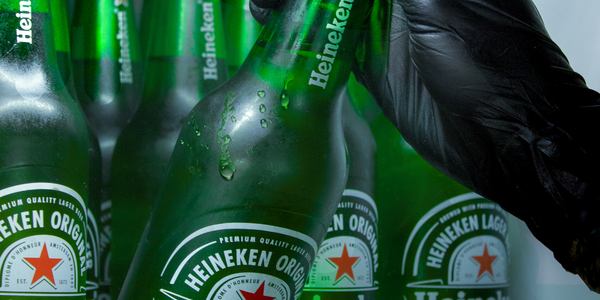Download PDF
Omnitracs Roadnet Transportation Suite
Technology Category
- Functional Applications - Fleet Management Systems (FMS)
- Functional Applications - Remote Monitoring & Control Systems
Applicable Industries
- Food & Beverage
- Retail
Applicable Functions
- Logistics & Transportation
- Warehouse & Inventory Management
Use Cases
- Fleet Management
- Predictive Maintenance
- Real-Time Location System (RTLS)
Services
- System Integration
- Software Design & Engineering Services
The Challenge
In early 1990, Southern Wine and Spirits improved its transportation efficiency by moving from route cards to Roadnet®, a computerized routing and scheduling solution from Omnitracs Roadnet Technologies. While Roadnet continues to play an intricate role in its daily routes, Southern Wine & Spirits took its routing process to the next level by giving its customer service staff real-time delivery information. The market-leading beverage distributor again turned to Omnitracs Roadnet Technologies and licensed MobileCast. MobileCast is a real-time route execution tool which works in conjunction with Java and GPS-enabled Nextel phones. Southern Wine & Spirits has almost 1000 phones with the MobileCast application. Implementation of this solution has significantly improved the company’s routing and overall efficiency.
About The Customer
Southern Wine & Spirits of America, Inc. is the largest wine and spirits distributor in the United States. Founded in 1968, the company is headquartered in Miami, Florida, and distributes wine, spirits, and other beverages from divisions in 12 different states. Southern Wine & Spirits is committed to providing the best possible customer service, leveraging technology to achieve this goal. The company operates 900 daily routes and services over 20,000 customers from 37 warehouses, utilizing Omnitracs Roadnet Technologies’ solutions to enhance its operations.
The Solution
Southern Wine & Spirits implemented MobileCast, a real-time route execution tool that works with Java and GPS-enabled Nextel phones. This solution significantly improved the company's routing and overall efficiency. MobileCast records actual service times for each account and updates Roadnet, making route plans more accurate. Additionally, Southern Wine & Spirits licensed Roadnet Info Center®, an enterprise-wide tool that provides employees access to both Roadnet and MobileCast data. This integration allows the company to proactively improve customer service by notifying sales personnel and customers about delivery times and any shorted items. The system also enables real-time monitoring of driver locations and route adjustments, ensuring timely deliveries and enhanced customer satisfaction.
Operational Impact
Quantitative Benefit
Related Case Studies.

Case Study
The Kellogg Company
Kellogg keeps a close eye on its trade spend, analyzing large volumes of data and running complex simulations to predict which promotional activities will be the most effective. Kellogg needed to decrease the trade spend but its traditional relational database on premises could not keep up with the pace of demand.

Case Study
HEINEKEN Uses the Cloud to Reach 10.5 Million Consumers
For 2012 campaign, the Bond promotion, it planned to launch the campaign at the same time everywhere on the planet. That created unprecedented challenges for HEINEKEN—nowhere more so than in its technology operation. The primary digital content for the campaign was a 100-megabyte movie that had to play flawlessly for millions of viewers worldwide. After all, Bond never fails. No one was going to tolerate a technology failure that might bruise his brand.Previously, HEINEKEN had supported digital media at its outsourced datacenter. But that datacenter lacked the computing resources HEINEKEN needed, and building them—especially to support peak traffic that would total millions of simultaneous hits—would have been both time-consuming and expensive. Nor would it have provided the geographic reach that HEINEKEN needed to minimize latency worldwide.

Case Study
Improving Production Line Efficiency with Ethernet Micro RTU Controller
Moxa was asked to provide a connectivity solution for one of the world's leading cosmetics companies. This multinational corporation, with retail presence in 130 countries, 23 global braches, and over 66,000 employees, sought to improve the efficiency of their production process by migrating from manual monitoring to an automatic productivity monitoring system. The production line was being monitored by ABB Real-TPI, a factory information system that offers data collection and analysis to improve plant efficiency. Due to software limitations, the customer needed an OPC server and a corresponding I/O solution to collect data from additional sensor devices for the Real-TPI system. The goal is to enable the factory information system to more thoroughly collect data from every corner of the production line. This will improve its ability to measure Overall Equipment Effectiveness (OEE) and translate into increased production efficiencies. System Requirements • Instant status updates while still consuming minimal bandwidth to relieve strain on limited factory networks • Interoperable with ABB Real-TPI • Small form factor appropriate for deployment where space is scarce • Remote software management and configuration to simplify operations

Case Study
Energy Management System at Sugar Industry
The company wanted to use the information from the system to claim under the renewable energy certificate scheme. The benefit to the company under the renewable energy certificates is Rs 75 million a year. To enable the above, an end-to-end solution for load monitoring, consumption monitoring, online data monitoring, automatic meter data acquisition which can be exported to SAP and other applications is required.

Case Study
How Sirqul’s IoT Platform is Crafting Carrefour’s New In-Store Experiences
Carrefour Taiwan’s goal is to be completely digital by end of 2018. Out-dated manual methods for analysis and assumptions limited Carrefour’s ability to change the customer experience and were void of real-time decision-making capabilities. Rather than relying solely on sales data, assumptions, and disparate systems, Carrefour Taiwan’s CEO led an initiative to find a connected IoT solution that could give the team the ability to make real-time changes and more informed decisions. Prior to implementing, Carrefour struggled to address their conversion rates and did not have the proper insights into the customer decision-making process nor how to make an immediate impact without losing customer confidence.





